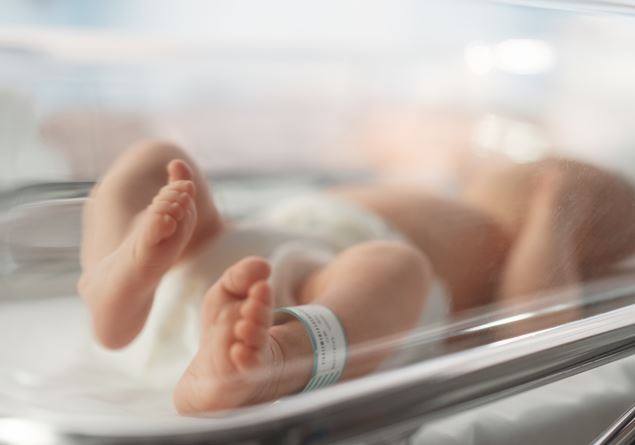by Nicoletta L. Bagliano
The kidnapping in Cosenza of a girl, taken away from the clinic where she had been born for a day (found and returned to her parents after a few hours) shocked many future mothers. How is it possible? Could it happen to me too? I’m not safe in the hospital? Is it so easy to kidnap a child? Lecite questions, to whom we asked to answer those who with the hospital safety do the deal every day. Everyone agrees: The maternity departments are safe And what happened is a unique and absolutely unrepeatable episode.
Safety in hospitals is a burning theme, especially for the continuous aggressions suffered by health personnel in the emergency rooms throughout Italy, but here we talk about the departments and the protection of minors and their families. The rules are clear and very rigid, and regulate the identification, entry and movement of people. At the same time, however, hospitals cannot be transformed into custodian places, where patients and families feel armored.
How then to feel safe, in a department like that of maternity, in which joy and serenity should reign sovereign? Here’s what the experts replied.
The health director: maximum attention in the protection of rights
“Safety has always been one of the most felt problems,” says Umberto Fodra, health director of the Sant’Anna hospital in Turin. «In the maternity departments, the most widespread fear is not so much the kidnapping as it is Cot exchange». An understandable fear, in such a delicate phase of a couple’s life, but that according to professionals belongs to the past, as the protocols in force in healthcare facilities protect children and parents from this risk.
“The rules are there, and they are rigid and precise”, continues Flandra “and We are very careful in access controlto ensure maximum serenity for the neomame ». So why, despite all this, sometimes something doesn’t work? «Because the hospital is not a bank (and then not even the bank is inviolable, editor’s note.). And we certainly cannot manage it by putting the police at the entrance, “militarizing” the departments. Allow patients to receive visits to relatives and friends, as it is right to be, and at the same time guarantee total security around them is a very difficult balance to maintain, but it is the dream of any health director and therefore our goal remains primary. Fortunately, episodes like that of Cosenza are isolated cases ».
Being surrounded by loved ones is the desire for most puerpere, who often after childbirth feel more fragile and need support and reassurance. Despite the visiting hours and the rules to be respected in the ward, check on sight who goes and who comes is not simple. And then Not all pregnancies are the same: There are psychiatric or drug addict patients, with their families next to it, who can sometimes create situations more at risk than the norm. “All have the right to be treated and cared forindeed precisely because they are more fragile they must be more protected “, adds the health director of Sant’Anna. “Having said that, it is obvious that the attention of the staff is maximum to try to prevent both error In good faith, it is all that can derive from illegal behavior».
The Risk Manager: the protocol system works
There are very rigid protocols to which the healthcare facilities must be followed, which regulate the accesses and dynamics within the departments. “The basic rules are the same for all the health structures of the country, public and private”, explains Giuseppe Vetrugno, risk manager of the Gemelli Polyclinic and associate professor of Legal Medicine at the Catholic University of Rome. «The first step it guarantees Safety and transparency in the public administration In general, eA all the more reason in a hospital, it is identification. So not only should the hospitalized people be identified, but also those who visit them. For this purpose it is practice that the patients themselves are free to indicate, at the beginning of the care path, those who wish to enter their room and who not ». Having said that, each health garrison then has its own internal regulations, which reflect the characteristics of the structure, but without regarding the golden rule: to know who enters and who comes out.
“When we talk about babies, the question is even more delicate and therefore regulated in a more severe way,” hooking the child to the mother from the moment of birth “, continues Vetrugno. This happens with the system of braceletsnow tested and put into practice in all the birth points of Italy: after cutting the umbilical cord, still in the delivery room, the baby is put a bracelet with a number and a code imprinted, which automatically associates it with the mother, which receives the same bracelet. The code correspond not only the name but also all the health information of both.
That of the bracelets is not the only control system. «Give the parents of the newborn to always be next to the baby It is a priority for the hospital, “continues the Risk Manager of the Gemelli Polyclinic. «Both in order not to interrupt the new bond that has just been created with birth and to guarantee greater safety to the family. The fact that mom and dad are as much as possible next to the cradle (Rooming in) Inside the room, single or double, it reaches a double purpose: that of giving serenity to the neo-generators who begin to relate to the baby, and at the same time guarantee a situation of maximum security ».
Also the leave from the hospital With the newborn, it takes place according to a precise procedure. «When the child is given to mom or dad before leaving the health facility, those who take over the child must exhibit the birth deed In copy “, explains Vetrugno” and this is a further guarantee for the minor and for mothers and dads “.
And the children who don’t have parents? For them, a special organizational machine is set in motion that places them in rooms close to the work station of the nurses, so that the control is continuous and also the intervention in case of need is immediate. “In particular situations then”, continues Vetrugno “it could be resorted to the temporary use of dedicated staff also on a voluntary basis”.
Speaking of security so we can rest assured, the system works? “I would say yes, and it also worked in the dramatic case of Cosenza”, concludes Giuseppe Vetrugno, “because – despite the evidence of the initial protection network – the alarm was immediately triggered giving the opportunity to recover the girl in a short time. Therefore, even in cases that we would never want to occur, the collaboration between the administrations shows that we are efficient and knowing how to remedy very critical situations avoiding the worst ».
Obstetric: neomamme must feel welcomed and protected
What about health personnel? Can there be false divided into circulation? Just as the patient and visitor to identify himself is a right of those who are hospitalized knowing who they are facing. “Because of this The uniforms of our operators in the department are customized“Branded” with the logo of the hospital and the name and surname of the wearer, “declares Paola Serafini, midwife, manager of the health professions of the Sant’Anna Hospital in Turin.
Neo moms and pregnant women can therefore be calm: “In a maternity department the primary objective is to make the woman feel welcomed, cared for and protected”, continues the midwife, “but also applies to dads, now always Present in the delivery room and which can also access the Caesarean room ».
The basic philosophy is: Safe hospital but open. “The guarantee of security is not only given by the company procedures, such as that of the bracelets put to the child and the mother immediately after childbirth,” says Paola Serafini “but from the possibility of the neogens themselves to remain with the child from the first wandering. Not to mention the quantity of photos that take immediately! In addition, the birth box are individual e The woman is never moved Since he enters when he goes out with the baby, about two hours later. In this period of time it does not only take place the identification of the newborn, but the first treatments, the skin contact, the breast attachment ».
“Even in the most difficult cases, in which neonatal intensive care is necessary”, adds Serafini, “access to parents and constant closeness with the child is allowed. Just as we guarantee it as much as possible to mothers with particular pathologies, more fragile than the others ».
Adapt to the new life: to do this the newborn needs everyone, mom, dad, midwife, nurses, doctors. And the mission of each hospital is to ensure that this happens in the most peaceful way possible, to make it go from the most safe place ever – the maternal uterus – to another equally protected, the outside world.








